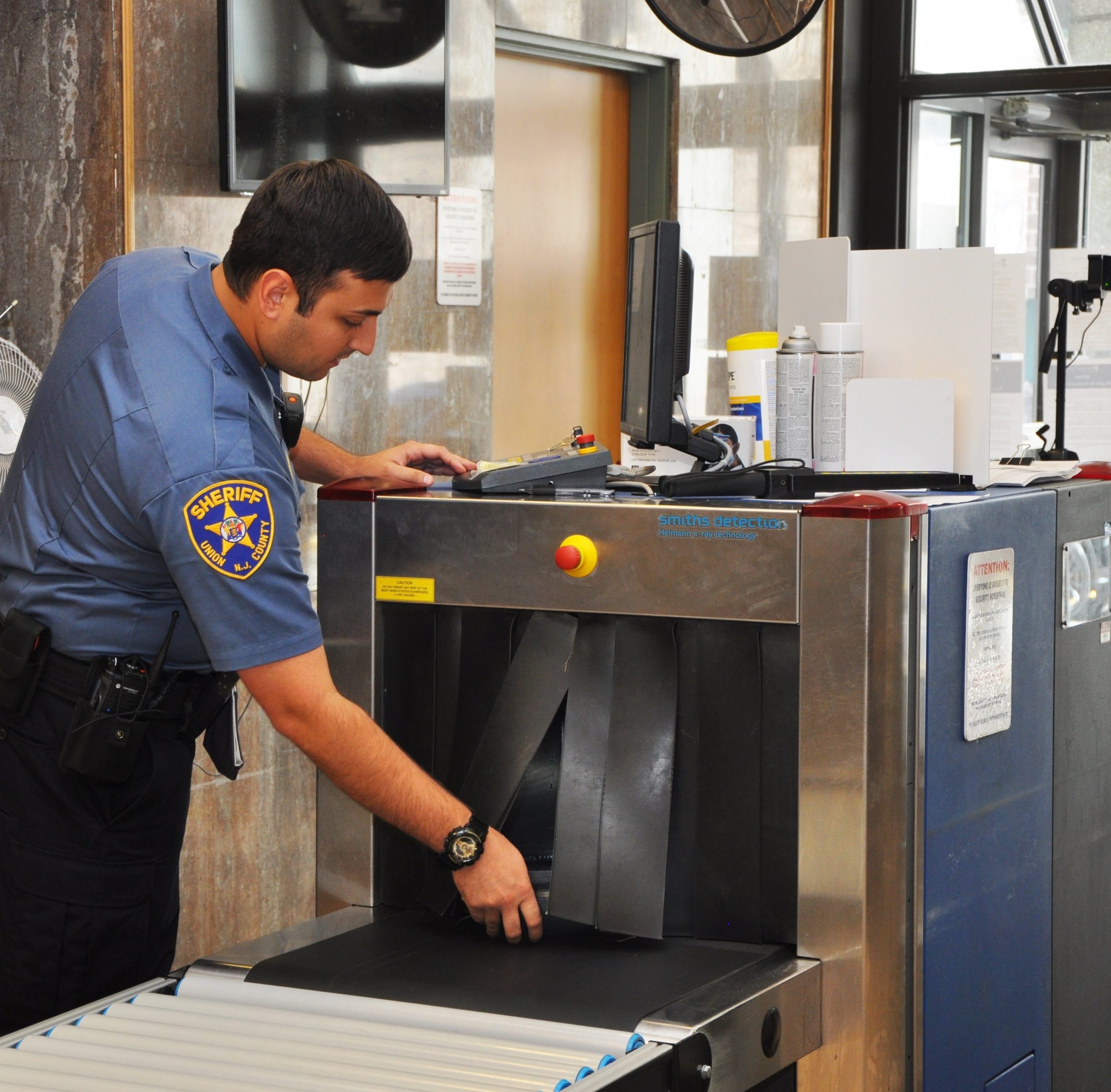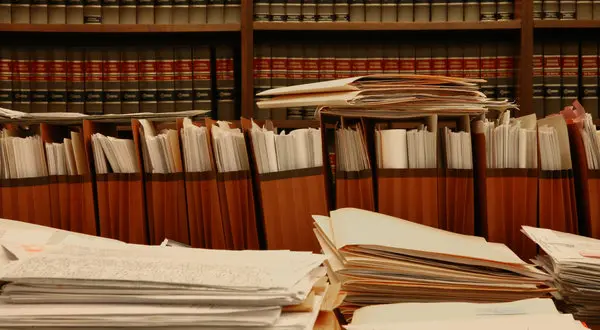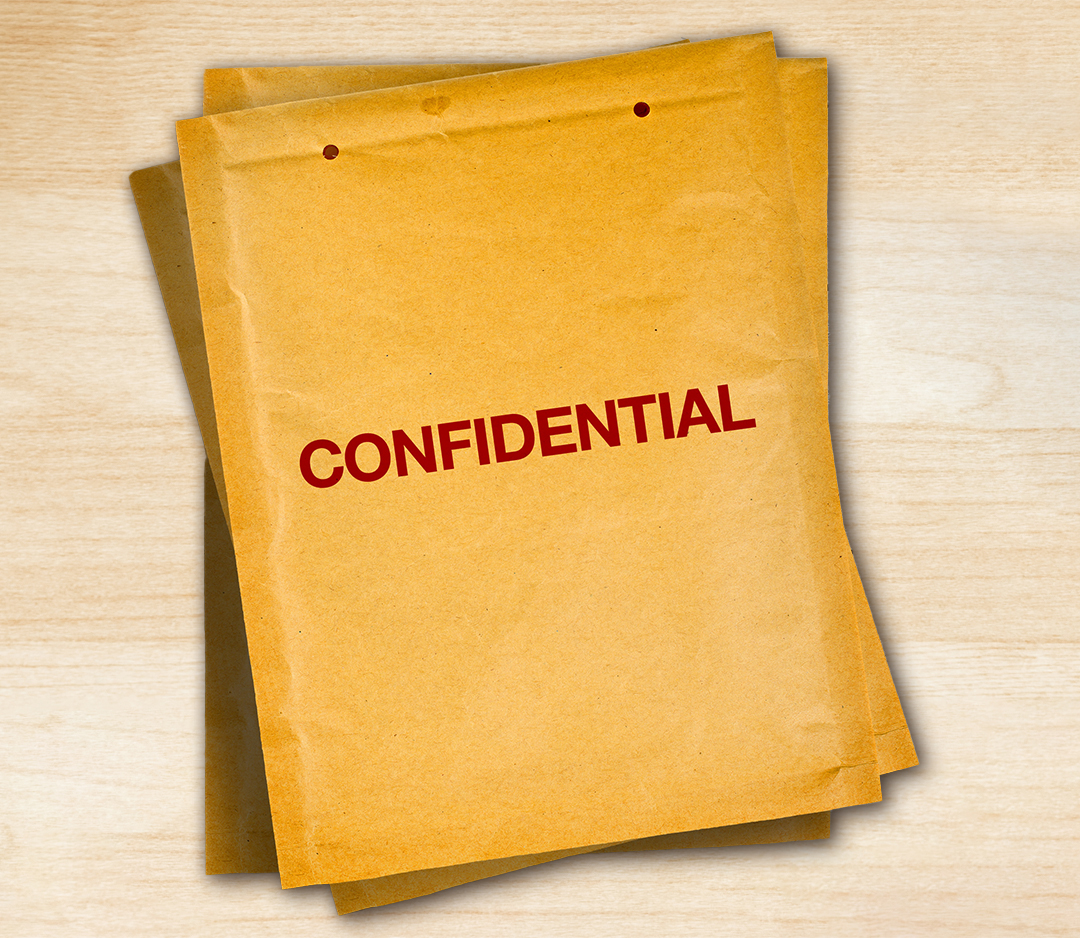
Same Screening Challenges as Legal Mail
Court systems rely heavily on paper, and many copies of each document are often generated. Some of these documents make their way into court facilities as they are part of proceedings and can be handed to the defendant to take back to the prison or jail with them. Given the nature of these documents, they fall under the umbrella of privileged communication and therefore require the same level of screening care as legal mail.
SCREENING FOCUSED ON WEAPONS
Installed Security
Measures Do Not Account for Documents
Court facilities are quite secure, with clearly visible guards and inspection points. People and possessions, like bags, purses, and other large items, are screened for weapons and sizable threats at the entrance to the facility. The screening technology used, likely X-ray or metal detectors, is limited in what it can pick up. Drugs and other contraband concealed in mail, files, or documents are not in a form or quantity that those screening methods will detect.


HIGH VOLUME OF DOCUMENTS
Large Quantities of
Documents Makes Smuggling Easier
The court system runs on paper, and while the digital transformation is occurring, it is slow in coming, meaning duplicate and triplicate copies will be for the foreseeable future. A lawyer arriving for multiple court cases could have many legal documents. A defendant’s friends and family may arrive with personal items to give to their loved one. Security officers must be able to quickly and efficiently screen for contraband and suspicious items while allowing remaining documents to move through as usual.
TREAT LEGAL DOCUMENTS THE SAME AS MAIL
Privacy, Confidentiality Across All Legal Correspondence
In a prison or jail mailroom setting, screeners must adhere to non-invasive screening options. This extends to the screening of legal documents meaning that the materials cannot be opened for screening unless it is conducted in front of the inmate and for probable cause. The courthouse environment isn’t well suited for document inspection leaving printed materials to pass through in the hopes that it doesn’t contain any illicit substances, drug-laced paper, or hide contraband.


T-RAY SCREENING
Quickly Scan Legal Documents Safely and Effectively
MailSecur T-ray imaging technology detects drug-laced papers and the smallest quantities of liquids, powders, and other drugs concealed in documents, sealed envelopes, and legal files without opening them. T-rays, unlike X-rays, are safe for humans, providing for hands-on screening and allowing the operator to manipulate the mail item to gain alternate views in real-time.
The 3D imaging is sensitive enough that the operator can see grains of powder or liquid moving within an envelope. MailSecur contraband screening can also identify sections of paper laced with drugs or common chemicals, and even spot the presence of suboxone strips hidden within the pages of a magazine or the folds of paper. Unlike X-ray or chemical trace kits, T-ray imaging technology is ideally suited to detect all types of drugs and contraband – including drug-treated papers, small quantities of powders, and micro-electronics.
MailSecur can be operated with minimal training, expanding the number of staff that can perform screening and significantly reducing the training time needed to become proficient with the system.
